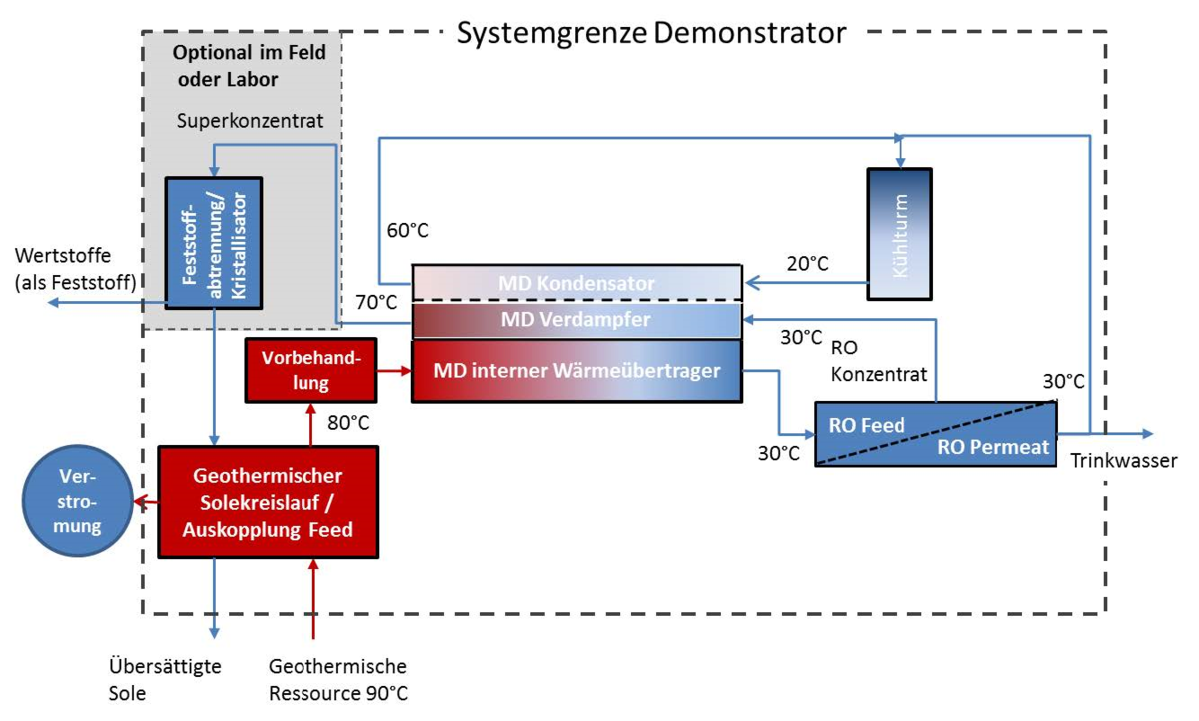Raw Material Extraction
Supervisors: , (both KIT), Prof. Dr. Diego Morata (UCHILE)
Person in charge: Valentin Goldberg
The dissertation analysis raw material and fresh water extraction from geothermal waters. The work takes place as a binational Cotutelle de Thèse together with the Center of Excellence for Geothermal Energy of the Andes (CEGA) of the Universidad de Chile in Santiago de Chile. Research topics include geochemical exploration in northern Chile, potential analysis of thermal waters in Germany and Chile as a source for raw materials, and development of treatment strategies.
An initial study compared different technologies for direct lithium extraction and evaluated their applicability and potential challenges in a geothermal system (Goldberg et al. 2022a). Here, it was shown that interfering with the chemical equilibrium of the thermal water can increase the scaling risk. Driving factors include kinetic reactions due to longer residence times, pH fluctuations due to buffering of sorbent processes, or incorporation of Li competing ions into used sorbentia. If these hurdles can be overcome, the approach offers enormous raw nateruak potential in Germany and in Chile. The currently operating geothermal power plants in Germany could supply up to 12% of the lithium demand of the planned local battery cell production (Goldberg et al. 2022b). Especially the sites in the Upper Rhine Graben with large flow rates ≥ 70 L/s and high lithium concentrations ≥ 160 mg/L have a very high potential. To determine the long-term potential, a reservoir model with a thermal-hydraulic-chemical coupled simulation was investigated (Goldberg et al. 2023b). Despite a possible decrease of lithium in the reservoir, a hydrothermal reservoir could produce lithium over 30 years and one single geothermal power plant could provide 0.5 - 3% of the annual, German lithium demand. In Chile, the country with the second largest lithium production in the world, the lithium circulating in the thermal water of the only geothermal power plant, Cerro Pabellon, could account for up to 2% of the country's production.
In Chile in particular, the mining sector and its immense water needs are in permanent conflict with local, often indigenous, communities. Here, a combined extraction of raw materials and fresh water from thermal waters could contribute to improving the situation. With this goal in mind, an approach has been developed (Goldberg et al. 2023a) to extract water from thermal waters via membrane systems while simultaneously increasing the mineral concentration to optimize subsequent extraction processes. The problem of scaling-particularly silica scaling-also arises in these membrane processes. In this work, a method developed in the laboratory (Spitzmüller et al. 2021) was numerically transferred to a large-scale demonstrator and tested during operation in a geothermal power plant in the Upper Rhine Graben (ORG) (Goldberg et al. 2021, 2023a). During the numerical transfer, it became apparent that the raw material extraction processes in combination with the highly complex waters of the ORG exceed the capabilities of established thermodynamic databases and that these processes cannot be represented. Only by creating a new data set, the processes could be represented correctly. The prototype test phases confirmed the methods and allowed fresh water production and mineral concentration of the waters in the ORG and Chile. Thus, a successful processing of the waters as a pretreatment for raw material extraction was proved as well as basic tests in the effect structure of degassing, residence time and pH change were carried out on natural deep waters.
In summary, the results of the work have shown the high potential for geothermal raw material extraction. Furthermore, critical points for an integration into the geothermal plant operation were worked out and (numerical) methods for a processing of the waters were developed. Finally, a geochemical exploration was carried out to improve the understanding of the hydtothermal systems of the Andes.


